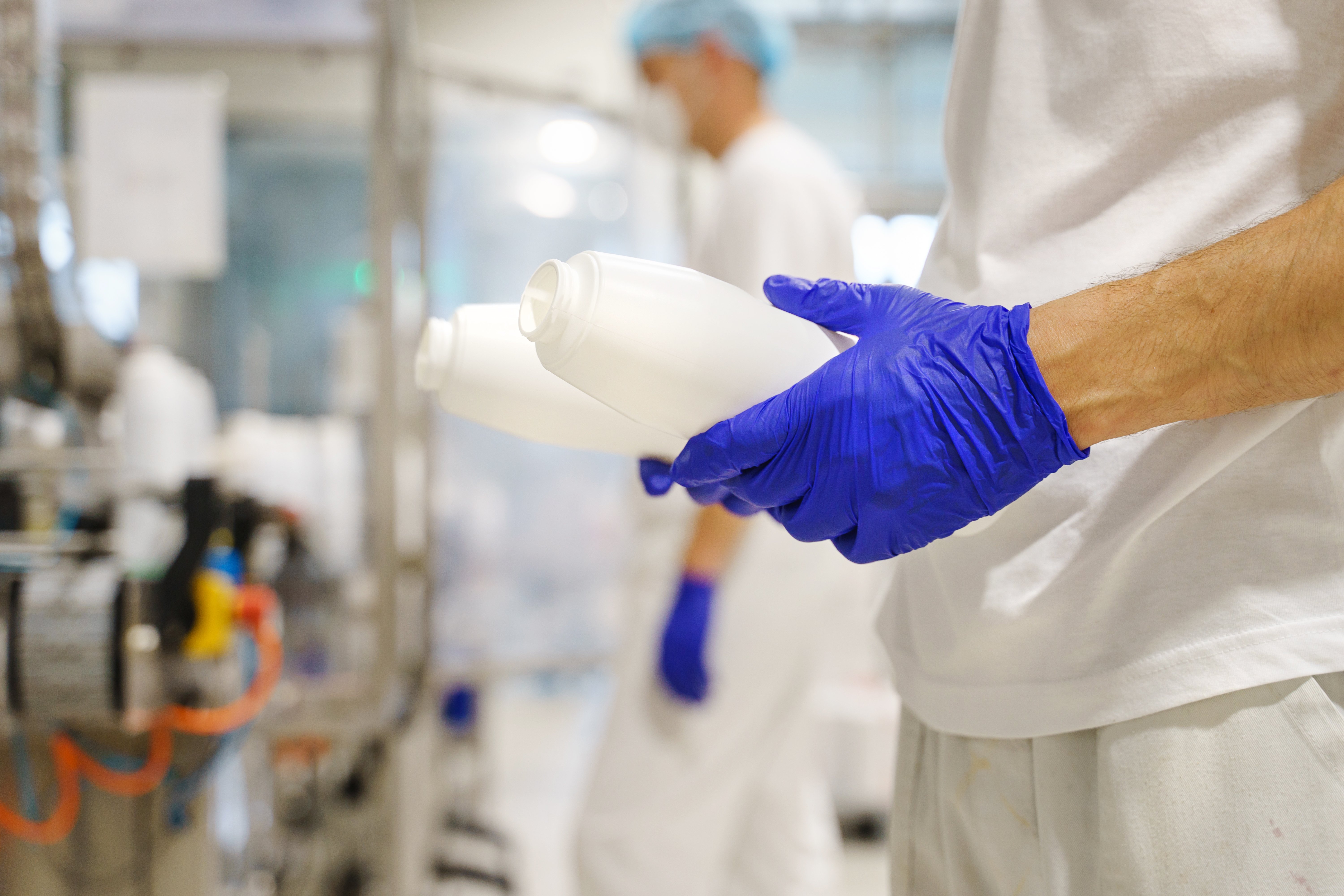Explainer: Are 'self-disinfecting' coatings, the latest COVID-19 hero, too good to be true?
Published 19 APRIL, 2020 UPDATED 19 APRIL, 2020
SINGAPORE — Masks and hand sanitiser aside, demand for “self-disinfecting” coatings that are said to be able to kill germs and viruses, including the coronavirus that causes Covid-19, has skyrocketed lately.
But do the latest heroes on the scene really live up to expectations, or have they already buckled under the abuses of many fingers weeks into their application on lift buttons at public housing estates, Changi Airport facilities and ATM machines alike?
TODAY spoke to experts to understand the science behind the technology and found that its efficacy could become compromised weeks into its application, even though the protective coating was advertised to be able to self-disinfect surfaces for up to three months or more a spritz.
Indeed, an interested party – Mr Jerry Lim, managing director of furniture supplier Alma Contract Singapore who recently ventured into the sanitising business – conducted swab tests to see if the claims held up, and found unsatisfactory results.
An adenosine triphosphate (ATP) test on a button in a lift connecting the arrival and departure halls at Changi Airport Terminal 2 on April 4 yielded a reading of 1,215 relative light units (RLU) – a high microbial count.
The readings are much lower on surfaces at the terminal such as a railing beside its Starbucks outlet (72) and a touch-screen surface of a self-check-in kiosk (84).
The industry takes values under 100 to be clearly associated with clean surfaces.
Earlier this week, his team also tested lift buttons at two public housing estates and found the RLU readings on those surfaces to be in the 500 to 600 range. Tests they conducted on treated ATM machines yielded readings in the 300s.
FIRST UP, WHAT’S THE HYPE?
SDST is one brand of coating that received media attention lately after Changi Airport Group’s charity arm, Changi Foundation, donated 650 litres of the product for use at 26,000 lifts across all Housing and Development Board (HDB) estates here.
Microbiologist Yeo Wee Ming, managing director of SUTL EnvironTech which distributes it, claimed that it can remain effective for up to 90 days without reapplication, even with repeated scrubbing.
Dr Mary Chan Bee Eng, a professor at the School of Chemical and Biomedical Engineering at Nanyang Technological University, said this can happen because anti-microbial coatings involve compounds that can poke “holes” on the membranes of microbes to reduce their ability to infect.
Usually, these microbe-killing compounds – already found in many general household products – can easily be washed away from the surfaces they are applied on.
SDST, for instance, contains benzalkonium chloride, which is the active ingredient in certain Dettol, Clorox, Cif, Magiclean and Mr Muscle products that is said to be effective against the coronavirus.
What makes the coating different is that scientists had found a way to anchor such compounds onto surfaces using silane chemistry, a compound that promotes adhesion between dissimilar materials.
It leaves an invisible residual film that can still continue to do its disinfecting work for days even after drying.
WHY DOESN’T IT SEEM TO WORK IN REAL LIFE?
While these products are effective, Assistant Professor Lim Kaiyang who lectures at the Singapore Institute of Technology said their effective periods are “often difficult to determine”.
They depend on the concentration of microbes it had been exposed to, and its environmental conditions, such as whether it was exposed to “rough treatment”, he pointed out.
“Once the coating is overwhelmed, it eventually loses its anti-microbial activity and becomes ineffective,” Dr Lim said. “From then on, the treated surface is once again open to contamination by microbes.”
He used the analogy of a coat of paint on the wall to illustrate how the anti-microbial coat can last for years if left untouched, but will come off if it is scratched every now and then.
Dr Chan said it is possible that the self-disinfecting surfaces become contaminated with use as the efficacy of coatings depends on the following factors:
- The adhesion quality of the coating to the applied surface
- The amount of virus and bacteria deposited on it
- Force asserted on the coated surface during cleaning
- Surface acidity
- Dirt deposited
Notably, “the surface can become covered with ‘killed’ viruses and bacteria so that they cannot kill ‘fresh’ viruses and bacteria again”, she said.
SO, HOW EFFECTIVE IS IT REALLY?
Speaking to TODAY, scientist Steve Kritzler, who is behind anti-microbial coating products Aeris Active and Evocide Extra, would only claim that their residual film, when used in high traffic areas, can remain active for seven days, or 200 hand touches.
“In low traffic areas, we have certainly validated periods of over 90 days… (But) frankly, in any high traffic area, re-application of the product more regularly than 90 days is (required),” said the technical director at the Australia-based Novapharm Research.
Dr Kritzler added that there is currently no anti-microbial coating that can effectively control microbial populations for long periods.
The only surface that managed to achieve this against bacteria and fungi is a “very expensive” material called anti-microbial copper, he said.
Over a video interview on Saturday (April 18), Dr Yeo said coating technologies infusing silane chemistry had been around for more than 20 years, but it alone can only give 30 days of protection or less, depending on abrasion and frequency of the surface’s use.
He said the SDST product included a few proprietary molecules that work together with the silane quaternary ammonia compounds to give an extended period of protection of up to 90 days.
Responding to claims of high ATP counts found on surfaces treated by SDST, Dr Yeo said the high readings require further investigation.
Asked what could have gone wrong, he said that it could be because the coating had been scratched off. He observed at least four users hitting the buttons with their keys on Friday alone when he returned to some HDB lifts a month after SDST had been applied.
Another reason could be that certain hand sanitiser or hand cream smeared onto the surfaces had thrown off the ATP readings, Dr Yeo said. To demonstrate, he squirted drops of two brands of hand sanitiser on a surface in his room and conducted ATP tests there. The two readings are 9,248 RLU and 3,343 RLU.
High readings do not always mean that the coating had lost its efficacy way before the 90-day mark, he added.
WHAT SHOULD PEOPLE'S ATTITUDES BE THEN?
While he is selling the product, Dr Yeo said it would be “harmful and misleading” for the community to think that they no longer need to wash their hands since such coatings had been used to treat frequently-touched surfaces in public.
The coatings merely reduce the risk of transmission, he said.
Dr Yeo reiterated that the product is self-disinfecting but not “self-cleaning”, since dirt, oil or saliva can still cover the coatings, rendering its properties ineffective.
Dr Lim said the general public should still adopt a “conservative approach” when implementing such products to protect against virus transmission and “not be over-reliant on them”.
“Always know that there are limitations in terms of how effective and sustainable such coatings can be,” he added.
“While such coating, when effective, can act as a hurdle against contaminations, it is still advisable for us to have good hygiene practices to minimise the chance of getting microbial or virus contaminations, or both.”




